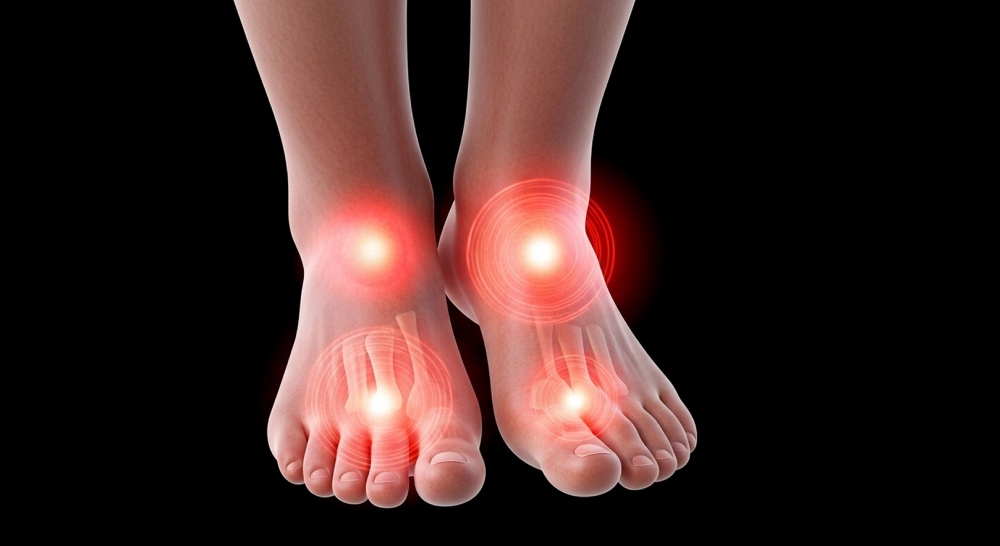
Podiatry Conditions: What You Need to Know
At Body at Boronia, our podiatrists specialise in diagnosing and treating a wide range of foot, ankle, and lower limb conditions. Your feet carry you through life, and even small problems can lead to pain, reduced mobility, or secondary issues higher up your kinetic chain (knees, hips, back). We believe in evidence-based, holistic care tailored to your goals.
Why feet problems shouldn’t be ignored
- Foot pain often signals mechanical or structural issues that worsen over time if untreated
- Altered gait or compensations can lead to injuries in knees, hips, and spine
- Many foot/ankle conditions respond well to early conservative intervention (orthotics, physiotherapy, footwear changes)
- Podiatric care is not just reactive – it’s preventive. We can screen for risks, monitor changes, and maintain foot health over the long run
Common types of podiatry conditions we treat
Below is a range of conditions seen regularly in our clinic:
- Plantar fasciitis / plantar heel pain
- Achilles tendinopathy / Achilles pain
- Tendon disorders of the foot & ankle (posterior tibial tendon, peroneal tendons)
- Ankle sprains, instability, and ligament injuries
- Metatarsalgia, Morton’s neuroma, forefoot pain
- Ingrown toenails, nail pathologies, fungal nails (onychomycosis)
- Heel spurs / bone spurs
- Flat feet / overpronation, high arches (pes cavus), structural deformities
- Bunions (hallux valgus), toe deformities (hammer toes, claw toes)
- Shin pain / shin splints (medial tibial stress syndrome)
- Stress fractures of the foot & lower limb
- Biomechanical gait abnormalities, overuse injuries
- Children’s foot conditions (flat foot, toe walking, growth-related pain)
This is not exhaustive – if you have discomfort, pain, or functional limitations in your feet, ankles, or lower legs, we encourage you to reach out for assessment.
Causes and Risks
Understanding what contributes to podiatric conditions helps in prevention and choosing the right therapy. Below are common causes, risk factors, and underlying mechanisms.
Mechanical & structural factors
- Foot alignment abnormalities (overpronation, supination, leg-length discrepancies)
- Weakness or imbalance in intrinsic foot muscles, calves, or hip stabilisers
- Poor biomechanics in gait (excessive loading, abnormal stride)
- Tightness or inflexibility in calf muscles, Achilles tendon, or plantar tissues
- Joint hypermobility or instability in ankles or foot joints
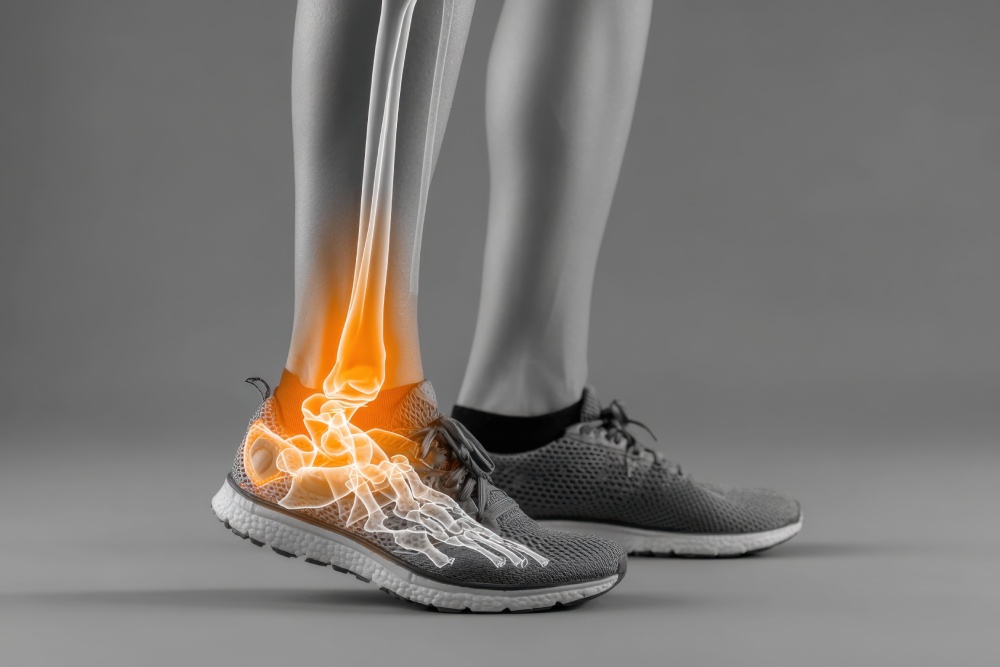
External & lifestyle contributors
- Inappropriate footwear (poor support, incorrect fit, worn-out shoes)
- Sudden increase in training load, new sport, or high-impact activities
- Hard surfaces or prolonged standing on hard floors
- Obesity or sudden weight gain (increases load on plantar structures)
- Occupational demands (long standing, walking, lifting)
- Inadequate recovery, overuse, or poor conditioning
Biological & systemic risks
- Age-related degeneration (tendons, joints)
- Genetic predisposition to structural foot shapes (e.g. flat feet, high arches)
- Other medical conditions (diabetes, peripheral neuropathy, arthritis)
- Poor circulation, edema, or systemic inflammatory processes
- Previous injuries or surgeries that alter foot mechanics
By evaluating both intrinsic (body) and extrinsic (environment, footwear, training) factors, we aim to build a prevention-forward treatment plan.
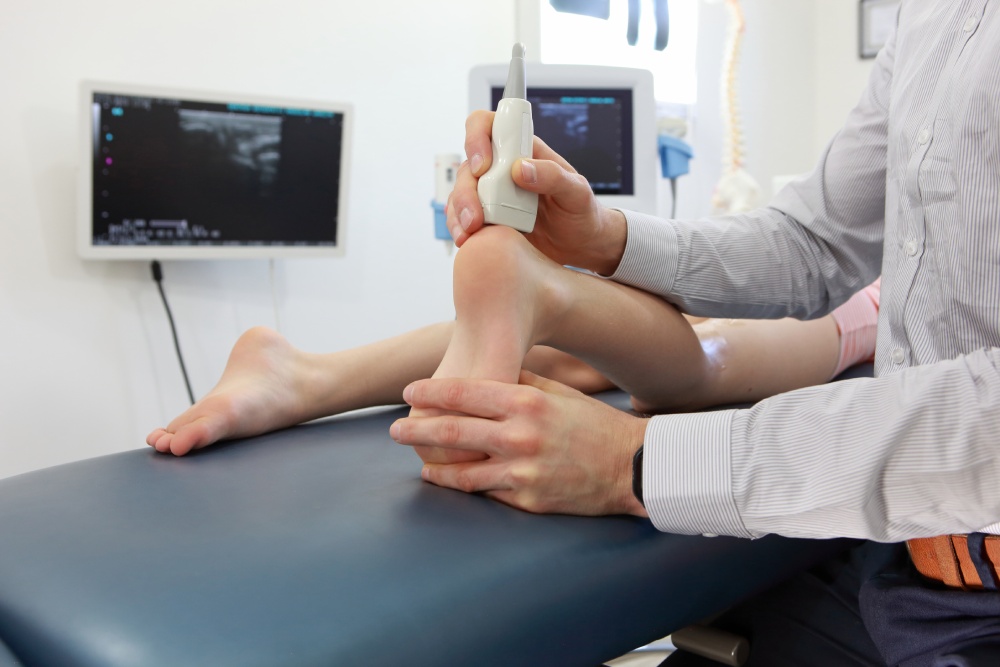
Diagnosis
Accurate diagnosis is key – it guides treatment decisions, sets realistic expectations, and helps track progress. At Body at Boronia, our diagnostic approach includes:
History & subjective assessment
- Onset, duration, progression of symptoms
- Location, quality, and aggravating/alleviating factors of pain
- Activity history, footwear, previous injuries or surgeries
- Occupational or sports demands
- Systemic health factors (e.g. diabetes, rheumatoid disease)
Physical & biomechanical examination
- Observation of foot posture, arches, alignment
- Range of motion tests (ankle dorsiflexion, subtalar motion, MTP joints)
- Strength and flexibility assessments (calf muscles, intrinsic foot muscles)
- Palpation to localise painful structures (tendons, fascia, joints)
- Gait and dynamic walking/running analysis (possibly video or pressure mapping)
- Orthotic and joint stress testing (ligament integrity, stability)
Diagnostic imaging & supplementary tests
- X-ray / radiograph (to visualise bone, joint structure, spurs)
- Ultrasound imaging (soft tissue, tendon pathology, bursitis)
- MRI / CT if needed to investigate more complex or deep pathologies
- Bone scan / DEXA in suspect stress fractures or metabolic bone disease
- Laboratory tests (for systemic or inflammatory conditions)
With a full diagnostic picture, we collaborate with you to design a precise and tailored treatment plan.
Treatment Options
We believe in a graduated, evidence-based, patient-centred approach. Treatment is often multifactorial, combining mechanical, biomechanical, therapeutic, and educational strategies.
Conservative & non-invasive care
1. Offloading & activity modification
- Short-term reduction or alteration of aggravating activities
- Relative rest, cross-training, avoiding hard surfaces
- Protective padding, taping, strapping
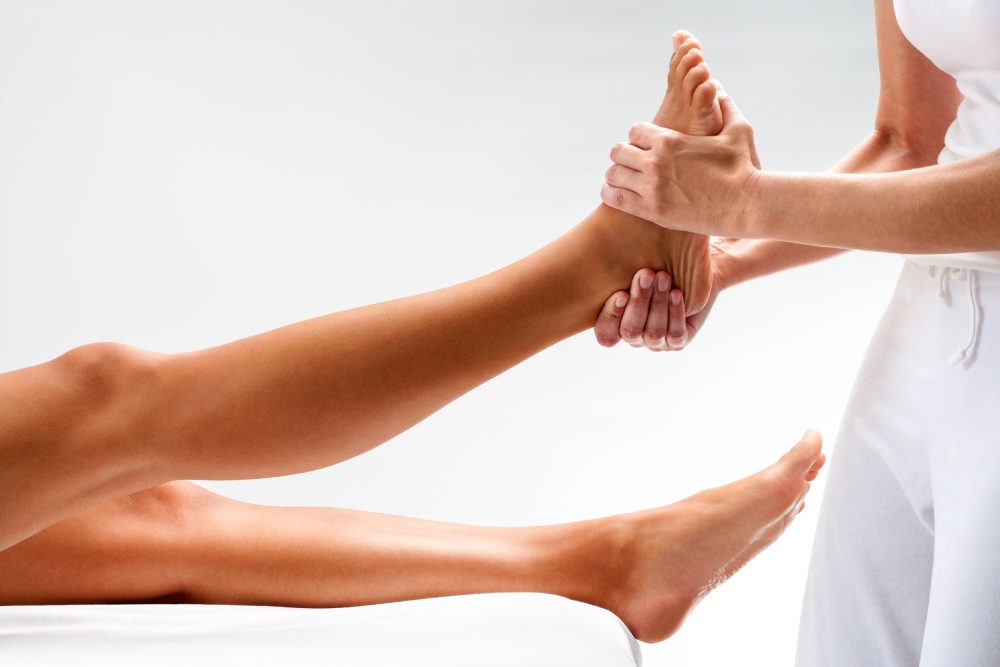
2. Footwear & orthotics
- Assessment and recommendation of appropriate shoes
- Custom or semi-rigid orthotic devices to correct alignment, provide support or redistribute load
3. Manual therapies & soft tissue treatment
- Massage, myofascial release, deep tissue work
- Joint mobilisations of foot and ankle
- Dry needling, instrument-assisted soft tissue mobilisation (IASTM)
4. Stretching, strengthening & rehabilitation exercises
- Stretching for calves, plantar fascia, Achilles
- Strengthening intrinsic foot muscles, hip, core, lower limb
- Progressive loading programs, balance and proprioception training
5. Modalities & adjunct therapies
- Shockwave therapy (ESWT) for plantar fasciitis, tendinopathies
- Therapeutic ultrasound
- Laser therapy
- Electrical stimulation, taping, kinesiology tape
- Cryotherapy, heat as appropriate
6. Medication & injections (in collaboration with your GP or specialist)
- NSAIDs (if not contraindicated)
- Corticosteroid injections (select cases, with care)
- PRP (platelet-rich plasma), autologous therapies (if suitable)
Advanced & surgical options
If conservative care does not achieve desired outcomes, or in more severe structural cases, further interventions may be considered:
- Referral to orthopedic or foot & ankle surgeon when structural correction is needed
- Surgical procedures: tendon repair, osteotomies, joint realignment, arthrodesis
- Post-operative rehabilitation integrated with podiatry and physio
Ongoing care & prevention
- Periodic review of orthotics, gait, and foot health
- Education for long-term foot maintenance (stretching, strengthening, footwear rotation)
- Monitoring for changes in biomechanics, weight, habits
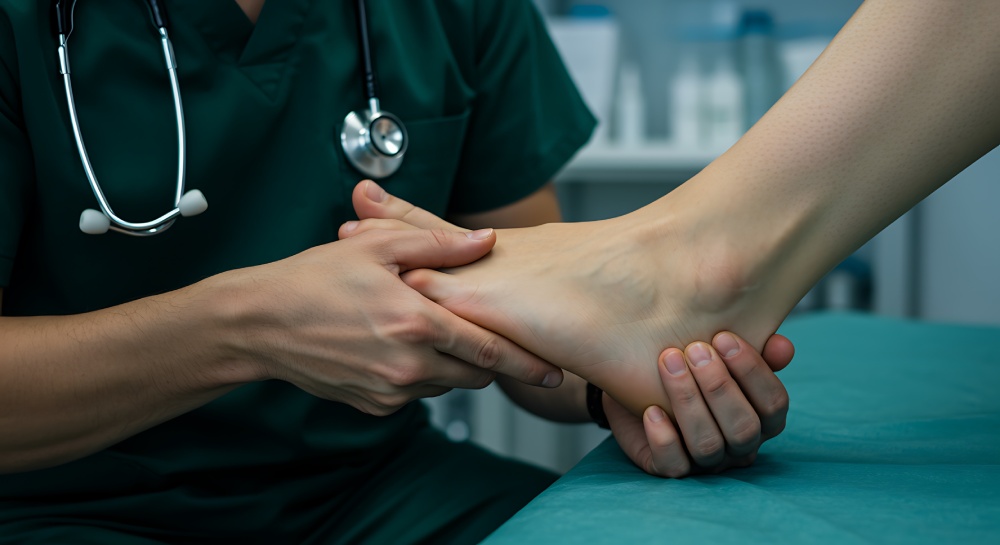
When to Book an Appointment
It’s better to act early than wait until pain worsens.
You should book a podiatry appointment if you experience:
- Persistent foot or ankle pain lasting more than a week
- Pain that limits walking, standing, or daily activities
- Pain that worsens overnight or is worse first thing in the morning
- Swelling, redness, warmth, or signs of inflammation not improving
- Pain in specific regions (heel, arch, ball of foot, toes) without obvious cause
- Numbness, tingling, or pins-and-needles indicating nerve involvement
- Structural changes visible (bunions, toe deformities)
- Recurrent or unresolved issues despite rest or “self-management”
- A desire to optimise foot health (e.g. athletes, workers on their feet, people with diabetes)
To schedule an appointment with our podiatrists at Body at Boronia, or for further inquiries, please contact us via phone or our online booking system. Early assessment can often lead to faster relief and help prevent further complications.
Take Control of Your Foot Health. Don’t let pain or mobility issues hold you back from living life fully.
Get Expert Help Today
Corns/callous
- Thick, hardened layers of skin that build up when your skin tries to protect itself against friction and pressure.
Nail disorders (e.g. Ingrown toenails, thickened toenails)
- Partial nail avulsion surgery
- Total nail avulsion surgery
- Annual foot check-up with podiatrist is necessary
- Diabetes reduces blood flow in feet, which leads to delayed healing of cuts and abrasions
- Causes nerve damage in your feet and legs
Bunions
- A bony bump that forms mainly on the joint at the base of the big toe
Hammer toes
- A foot deformity that causes curling of the toes
- Inflammation and swelling caused from wear and tear on your joints
Warts (Verruca Pedis)
- Skin growth caused by a viral infection
Athletes Foot (Tinea)
- A contagious fungal skin infection that affects the foot
- Arch pain or pain under the heel
- Inflammation at the back of the ankle
Sesamoiditis
- Pain at the base of the big toe
Morton’s neuroma
- Sharp burning pain in the ball of your foot that may radiate to your toes
Heel Spurs
Orthotics
Custom-made shoe inserts that support the feet and correct imbalances
- Reduces forces on your feet
- Enable your feet to work in the most stable and efficient position to perform daily activities
- Reduce pain in your feet and other joints such as knees and hips
Footwear education
A good shoe should have:
- A firm heel counter (provides stability to the foot)
- Sufficient depth and width at the toes
- Un upper made of natural material to allow it to be more breathable
- A sole made of rubber to allow for shock absorption
Caused by too much activity and stress on foot and ankle muscles
Paediatric podiatry
- specialists in children’s feet
Flat feet (fallen arches)
- when arch of foot is lower than normal

